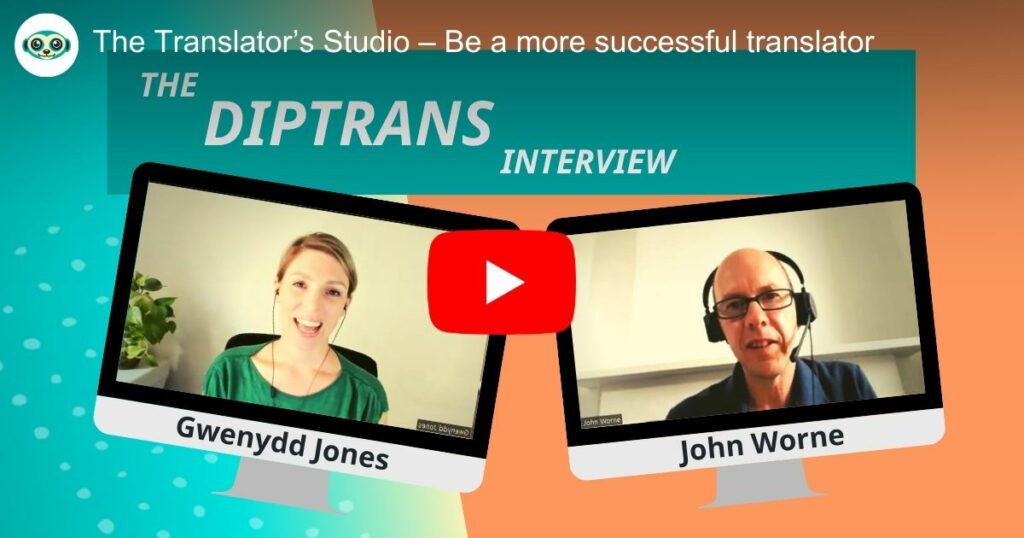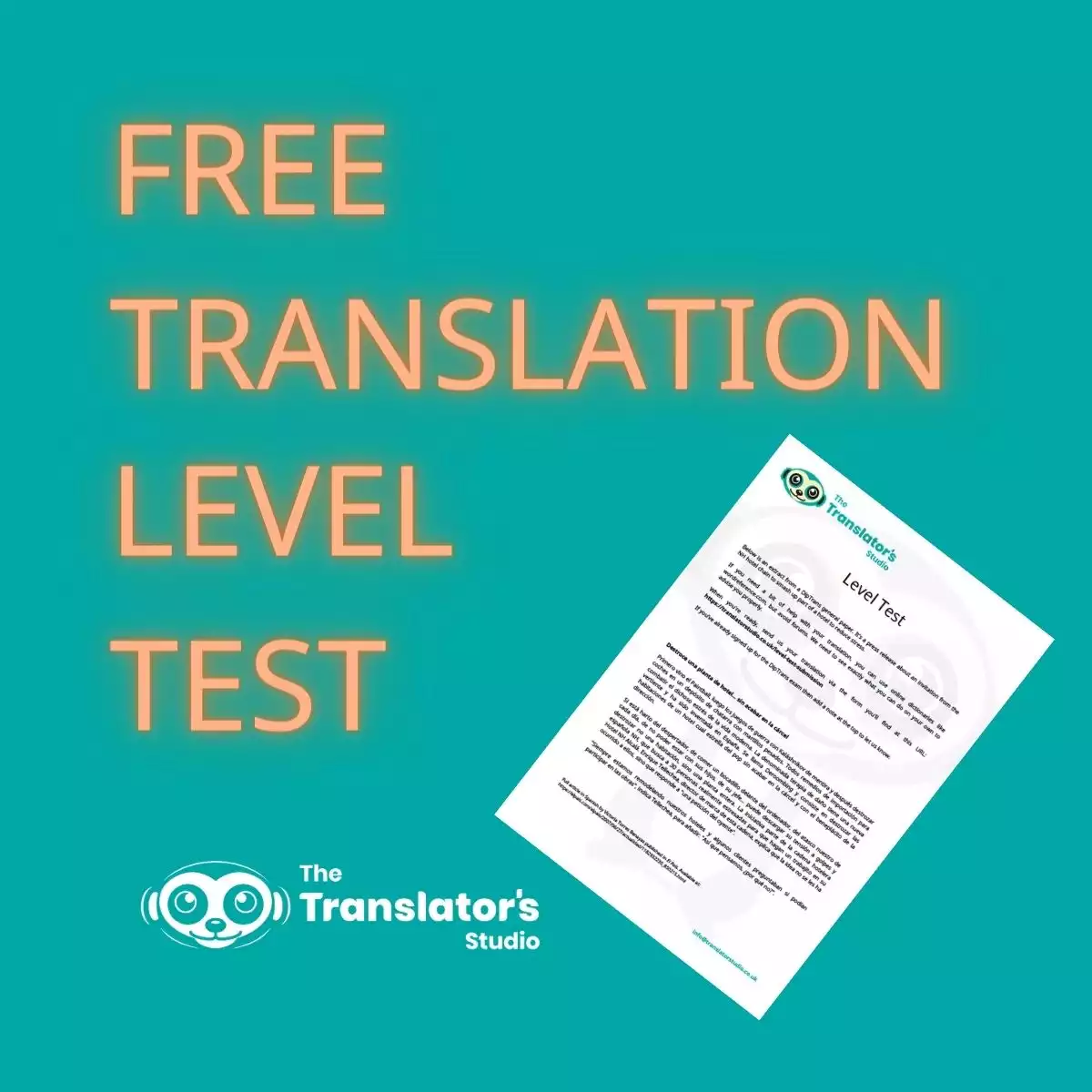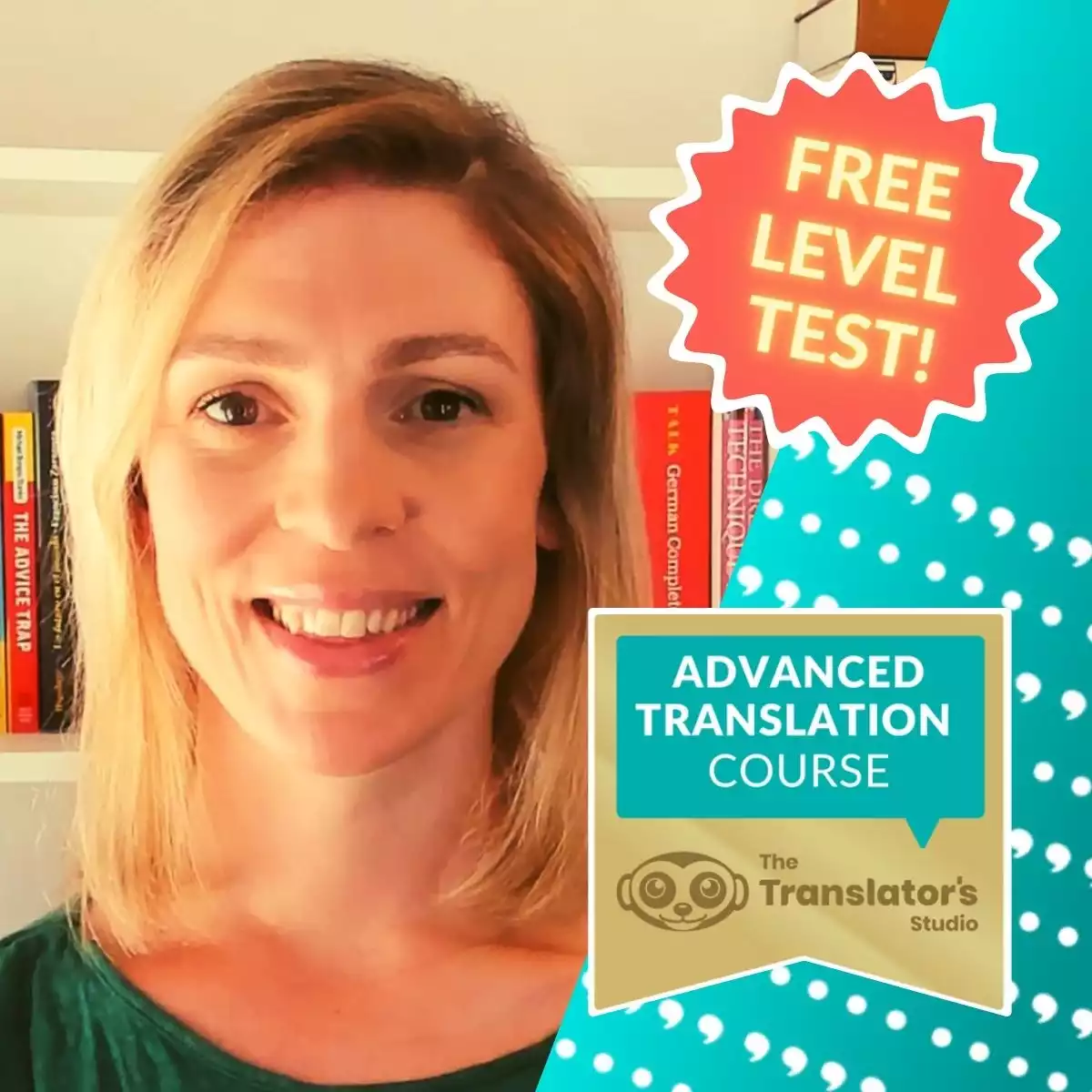Why do the CIOL DipTrans exam in 2025 if you want to become a translator? Because accredited translators get more work.
The Diploma in Translation (DipTrans exam) is a postgraduate-level translation qualification awarded by the Chartered Institute of Linguists (CIOL).
The DipTrans will help you improve your career prospects. It’s an alternative to a translation degree that can contribute to you getting better-paid work as a professional translator. This article will tell you everything you need to know about the DipTrans qualification.
If you’re starting out as a translator, you should do the CIOL CertTrans exam first.

What’s the Diploma in Translation (DipTrans)?
The Diploma in Translation, known as the DipTrans, is the postgraduate level professional qualification issued by the renowned Chartered Institute of Linguists (CIOL). It’s the translation qualification to get if you’re working as a translator or thinking of becoming one.
Unsure whether you're ready for the CertTrans, ATA exam or DipTrans?
Do our free translation level test and find out.
Available for Spanish- and French-to-English translators.
Set at Ofqual Level 7 (master’s level), you get it by sitting a translation exam. The qualification is internationally recognised and accepted by the translation industry. Once you’ve passed, you can add the letters CIOL DipTrans after your name.
The CIOL says: “the Diploma in Translation (DipTrans) is the gold standard for anyone wanting a career as a freelance translator or to work as a translator for international corporations worldwide and meets the need for a high-level professional translating qualification.”
What languages can you sit the DipTrans in?
You can sit the DipTrans from the following languages into English: Spanish, French, German, Italian and Russian.
If you translate from English, you can sit the DipTrans going into a long list of target languages: Albanian, Arabic, Bengali, Chinese, Croatian, Czech, Danish, Dutch, Finnish, French, German, Greek, Hindi, Hungarian, Italian, Japanese, Norwegian, Panjabi, Polish, Portuguese, Romanian, Russian, Slovak, Spanish, Swedish, Tamil, Turkish and Urdu.
How long is the CIOL DipTrans exam?
The DipTrans consists of three separate exams that take a total of seven hours to sit. In each exam (called units), you have to produce a written translation of a source language text. The exam texts have a combined wordcount of about 1,500 words.
- Become a more successful translator
- Learn fast with extremely detailed feedback
- Prepare to pass the CIOL DipTrans exam
- Get your advanced translation certificate
What are the papers in the exam?
Unit 1 is a general translation of about 600 words. You have three hours to translate it. The content could be a newspaper article or another similar type of journalistic text.
Unit 2 is a semi-specialised text of about 450 words, and you can choose from technology, business or literature. You have two hours to complete this part of the exam.
Unit 3 is also a semi-specialised translation, and the options are science, social science or law. Like in unit 2, it’s around 450 words and you have two hours to complete.
You can sit all three units or just one or two. But to gain the qualification, you must pass all three papers within three years. This is new from 2021, before this year, candidates had five years to pass all papers.

Is the DipTrans an exam or a course?
The DipTrans is an exam that you must prepare for. The Chartered Institute of Linguists (CIOL) says candidates must be competent in both the source and target languages, have good writing skills and the ability to translate at a professional level.
According to the CIOL: “it must be stressed that candidates, even those holding a degree in languages, generally require additional experience or training.” Most translators take a course to prepare, even very experienced ones. The Translator’s Studio offers a pre-DipTrans and DipTrans course with plenty of course content and translation assignments to help translators get ready to sit the Diploma in Translation exam.
What’s the difference between the DipTrans and an MA in Translation Studies?
The CIOL Diploma in Translation is a master’s level 7 qualification, but it isn’t a course.
Both the DipTrans and an MA are post-graduate level 7 qualifications. However, an MA (Master of Arts) is a course taught by a university that you complete over one or two years. You have to attend lectures and do assignments, as well as a lot of reading and studying. If you complete the work to the appropriate standard, the university awards your MA.
A master’s degree (MA or MSc) isn’t the same as the unofficial and unregulated “master’s” certificates you can get through courses offered by centres in certain European countries like Spain.
The CIOL DipTrans examination also leads to a post-graduate level 7 qualification but it’s an exam, not a course. Unlike an MA, where you learn to translate and if you reach the required standard are awarded the qualification, you must already have the required level when you sit the DipTrans exam. There’s no teaching involved. It’s simply a test of your professional translation skills on the day.
You need extensive knowledge of translation to pass. Most translators do a preparatory course and try to get some professional translation experience before they sit the DipTrans. At the Translators Studio, we have outstanding translator trainers. We can prepare you for the exam and help guide you on getting some experience. Get your free level test.
Find out more about the difference between a translation degree, the MA in translation studies and the DipTrans.
Unsure whether you're ready for the CertTrans, ATA exam or DipTrans?
Do our free translation level test and find out.
Available for Spanish- and French-to-English translators.
Read more about the similarities and differences between an MA in translation studies and the DipTrans.
The #DipTrans qualification is the professional translation qualification to get. Find the definitive guide here. #t9n #xl8 @TranslatorStu Share on XWhat’s the difference between the DipTrans and the CertTrans?
The CertTrans is the level 6 certificate in translation and the DipTrans is the level 7 diploma in translation. Both qualifications are awarded by the CIOL but the CertTrans is an entry-level professional qualification while the DipTrans is an advanced professional qualification. Check out our article on the difference between the CertTrans and DipTrans.
|
|
- Become a confident professional translator
- Learn fast with our extremely detailed feedback
- Prepare to pass the CertTrans exam
- Get your translation certificate
- Network in our private Facebook group
- Become a more successful translator
- Learn fast with our extremely detailed feedback
- Prepare to pass the CIOL DipTrans exam
- Get your advanced translation certificate
- Network in our private Facebook group
How much does it cost to sit the exam?
It’ll cost you £895 to sit all three DipTrans papers in 2025. You can also pay to sit each paper separately, with Unit 1 priced at £500 and Unit 2 and 3 costing £385. Please check the latest pricing information on the CIOL website.
The DipTrans is a career investment, which is why it’s very important to do a high-quality DipTrans course that will let you practice with general and semi-specialised past papers to help increase your chances of passing first time.
The DipTrans exam is suitable for translators in the USA, Canada, Latin America, Australia and anywhere else in the world.
Where can you sit the DipTrans?
The only place to sit the DipTrans is online on a computer with invigilation through your webcam and microphone. You can sit the DipTrans from anywhere in the world where you have a reliable internet connection. See our article about this remote option. There used to be an option to sit the DipTrans at a registered centre, using a computer or a pen and paper, but the online option is now the only way of sitting this exam.
When are the DipTrans exam dates?
The exam is offered twice a year, in January and in July. It takes place over two days, with units 1 and 2 on the first day and unit 3 on the second day.
Can I use a dictionary in the DipTrans exam?
The CIOL DipTrans is an open-book exam where paper-based reference materials are permitted. Candidates can use bilingual, monolingual, and specialist dictionaries. You can also use published glossaries and/or personal word banks, as well as reference materials like encyclopaedias.
Can I use the Internet in the DipTrans exam?
No, you can’t use the Internet or electronic dictionaries or devices.
How is the DipTrans graded?
According to the Chartered Institute of Linguists (CIOL), candidates are graded under two different aspects of performance:
- Comprehension, accuracy, transfer of names, dates, figures, etc.
- Grammar (morphology, syntax, etc.), register, cohesion, coherence and organisation of work, punctuation, orthography, accentuation.
What’s the pass mark of the DipTrans exam?
The overall pass mark to obtain the CIOL DipTrans qualification is 60%. Merits or distinctions may also be awarded.
Is it easy to pass the CIOL DipTrans exam?
The CIOL DipTrans is a challenging exam for professional translators. Depending on the paper, the approximate success rate of candidates is around 25%. It’s therefore very important to be properly prepared.
When our lead tutor Gwenydd Jones interviewed John Worne, the CEO of the CIOL, on how to pass the DipTrans exam, he said: “We want people to achieve this qualification. It would be tragic if someone missed out because they hadn’t understood what was required. I think it’s very unlikely that would happen to someone who’d been prepared by someone like you. Candidates should read the exam specification and do a course if they can possibly afford it.” Watch the full interview on how to pass the DipTrans.

When do the DipTrans results come out?
The results are issued within three months of the exam date.
What happens if I don’t pass all three parts of the exam on my first try?
If you fail one or more parts of the exam, you have a total of three years to pass the others. At The Translator’s Studio we offer Resitter Packs and Translation Workshops. So, if you have one or more papers still to pass, we have you covered.
The DipTrans qualification is the professional translation qualification to get if you’re working as a translator or thinking of becoming one.
FAQ about the DipTrans qualification
Can anyone sign up for the DipTrans exam?
Full membership of the CIOL isn’t required to sit the exam, but you do have to become an IoLET affiliate member. This is the lowest membership grade and it costs just £26 for 12 months. Once you get the qualification, it can help you work towards full membership of the institute. This is worth doing because it can enhance your career prospects.
Why is the CIOL DipTrans a useful qualification to have?
To stand out in the translation industry and have confidence as a translator, a recognised and respected qualification is essential. The CIOL DipTrans is seen as the industry gold standard and is proof that you can translate at a professional level in your language combination. Read more about how accredited translators get more work.
Is it better to have the DipTrans or an MA?
Although they are both post-graduate level 7 qualifications, the DipTrans and an MA are very different. An MA is a course of study and the DipTrans is an exam. The two qualifications share some common challenges but they’re very different. One key difference is that the financial investment is much higher for a university MA in translation studies. Check out this article for the lowdown on the differences between the two.
Can I sit the CIOL DipTrans exam if I don’t have a language degree?
Anyone can contact the Chartered Institute of Linguists and sign up to sit the Diploma in Translation exam. But the CIOL warns that even translators with a degree in languages “generally require additional experience or training”. Because it’s such a challenging exam, The Translator’s Studio has developed a set of pre-DipTrans and DipTrans preparatory courses to get you ready to sit the exam. If you’re not aiming for the qualification just yet, but want to get started in translation, check out our Conversion Course.
Is the DipTrans qualification suitable for translators in the USA?
Yes. In emails exchanged with the CIOL, we’ve confirmed that you can examine into US English. This means the DipTrans exam is suitable for translators in the USA, Canada, Latin America, Australia and anywhere else in the world. With the new remote option, the qualification is more accessible than ever.
Our DipTrans preparatory courses are suitable for translators based in the USA, Canada and Latin America. We have many students from the Americas who take our courses to prepare for the DipTrans, the ATA exam or for professional development.
- Become a more successful translator
- Learn fast with extremely detailed feedback
- Prepare to pass the CIOL DipTrans exam
- Get your advanced translation certificate
What’s the difference between the DipTrans and the ATA certification exam?
The American Translators’ Association (ATA) certification exam leads to a certificate issued by that professional translators’ association. It’s a three-hour invigilated exam that consists of three passages with a combined total of about 750 words.
Translators can use paper resources and have limited access to the Internet. It’s designed to test the translator’s ability to produce a professional translation. The pass rate at time of writing is less than 20%.
The Translator’s Studio courses can help you acquire the skills you need to pass this exam. Check out this interview between Gwenydd Jones and the ATA head of certification David Stephenson.
What’s the difference between the DipTrans and the ITI membership exam?
The Institute of Translating and Interpreting (ITI) membership exam is one route to joining that professional translators’ association. The ITI exam is a 1,000-word translation that you can produce in your own time over a weekend with full access to the Internet and to consultation with other translators. It isn’t a qualification and the only assurance that the translation is the translator’s own work is a signed declaration by them.
The DipTrans is a post-graduate level 7 qualification obtained in an invigilated exam without access to the Internet. It’s equivalent in level to an MA in translation and accredited by Ofqual. It’s the industry gold standard and it proves that you can translate professionally under strict exam conditions.
DipTrans Quiz
Test your knowledge after reading this article. True or false?
a) The DipTrans is only held once a year.
b) The DipTrans includes translating three specialist texts.
c) You can’t use the Internet for research while you do the exam.
d) The pass mark is 60%.
e) The DipTrans is a government-regulated post-graduate level 7 qualification.
Answers at the end!
Do a free level test before you sign up for the DipTrans
Get your free level test from the Translator’s Studio and get ready to sit the CIOL Diploma in Translation!
Unsure whether you're ready for the CertTrans, ATA exam or DipTrans?
Do our free translation level test and find out.
Available for Spanish- and French-to-English translators.
Where Can I Find Out More about the CIOL DipTrans Exam?
The Translator’s Studio is the number one expert on the CIOL DipTrans Exam. Visit our blog index to see a complete list of the numerous articles available on our blog to help you pass the DipTrans.
DipTrans quiz answers: a) false; b) false; c) true; d) true; e) true.








0 Comments